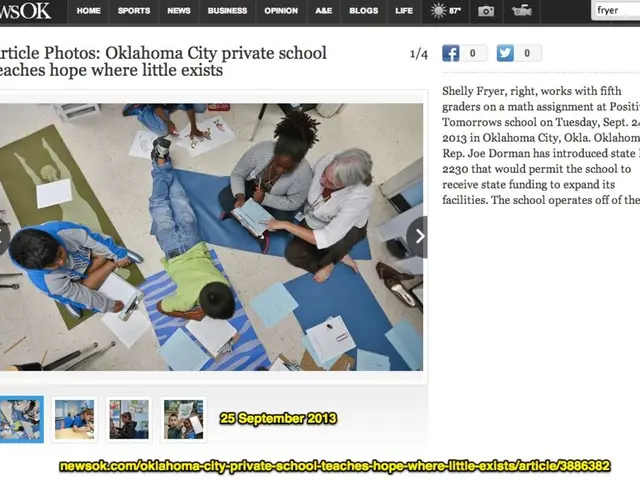Leaving Stigma Behind: Why Mental Health Care is Becoming Mainstream
Have all of you now embarked on a therapeutic journey?
Going to therapy? No longer a secret whisper. Younger generations are opening up about their mental health struggles, with socially acceptable conversations and increased accessibility leading the way. But what drove this shift in attitude? Is it because our lives have become more complicated, or simply because we're learning to talk about it more?
It's no secret that the digital age brings new challenges - expectations of career success, personal relationships, digital mastery, financial stability, and more. The anxiety of keeping up, coupled with global crises like wars, climate change, and pandemics, create a perfect storm. It's not shocking to see such struggles reflected in rising demands for psychotherapy.
As reported by the German Association of Psychotherapists (BPtK), the need for psychotherapy has nearly doubled in the past two decades [1]. Every year, around 20 million people in Germany develop a mental illness, but sadly, only 1.9 million receive annual outpatient psychotherapeutic treatment [1].
The New Normal
As mental health is becoming as essential as physical health, it seems that mental health care is not just being accepted but embraced. Among the respondents, 94% believed that depression should be treated psychotherapeutically [1]. The stigma around psychotherapy is easing, and while it's not completely gone, it's making headway.
Individuals who had once shied away from help are now seeking it faster than ever. As Dr. Johanna Thünker of the German Association of Psychologists (BDP) noted in an interview with ntv.de, this is especially true for those who were never before an option – such as the 60/70 plus generation [1]. This change is due to increased touchpoints through their own children, as well as physicians recommending psychotherapy for certain conditions.
Recently recognized disorders like ADHD and autism, which traditionally manifest in childhood or adolescence, are now being addressed in adulthood. ADHD was only recognized as a disorder in adulthood in 2000, opening the door to a large group of adults who are now receiving a diagnosis or seeking treatment that may not have been available before.
Embracing Transparency
Online platforms, such as TikTok, are fostering a culture where mental health issues are discussed openly. This transparency shatters the stigma surrounding mental illness and encourages other individuals dealing with similar struggles to seek help. However, Thünker warns that mental health treatment is not a lifestyle commodity but is reserved for those in need.
While social media normalizes the idea of seeking help, many go years or even decades without addressing their mental health concerns, only seeking help when it becomes a crisis. Early diagnosis and treatment are crucial to mitigate the severity and chronicity of these conditions, emphasizes Thünker.
In the fast-paced digital world we live in, it's essential to prioritize mental health just as much as physical health. The journey to acceptance is long, but progress is being made as society sheds the stigma surrounding mental health, promotes open conversations, and expands accessibility for all.
[1] Thünker, D. (2023). Behind the couch: Enough with the stigma - therapy is essential for mental health. Retrieved from ntv.de
- Recognizing the importance of mental health in today's fast-paced digital world, many community policies are now prioritizing vocational training programs that integrate health-and-wellness, mental-health, and personality development components to better prepare individuals for various challenges.
- Armed with the knowledge of science, individuals can embrace a holistic approach to self-improvement, combining vocational training with mental-health strategies, promoting not only professional growth but also overall well-being.







